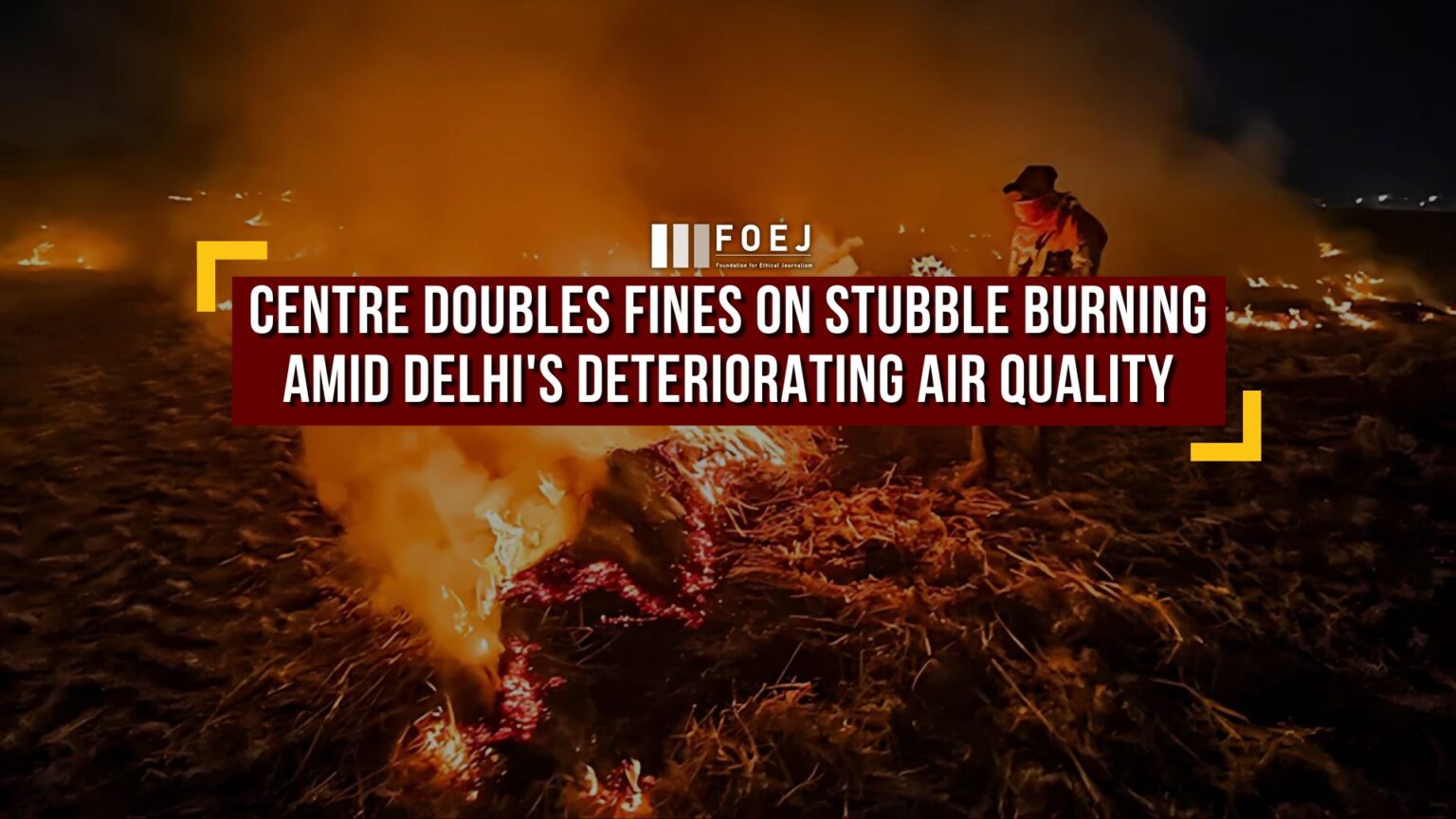The Union Ministry of Environment, Forest and Climate change on Wednesday doubled the fine on stubble burning in Delhi and its neighboring areas. The ministry also introduced new rules under the Act for filing complaints, calling for an inquiry and laying down the adjustment process. This development came after the Supreme Court termed the Environment Protection Act (EPA), in 1986, and the small fines for “toothless”. The Supreme Court had also expressed dissatisfaction with the selective and insufficient efforts to recover environmental compensation for the burning of paddy stubble.
“Unless proper exercise of power under Section 15 of the Act is made, there cannot be any effective action against the wrongdoers. We expect the Government to take action within two weeks from today,” the court said.
What Does the New Order Include?
The new regulations require farmers with less than two acres of land to pay an environmental compensation of Rs 5,000 for burning stubble.
For farmers with land between two and five acres, the fine is set at Rs 10,000, while those with more than five acres will face a compensation charge of Rs 30,000.
Previously, the compensation for farmers with less than two acres was Rs 2,500, for those with two to five acres it was Rs 5,000, and for farmers with more than five acres, it was Rs 15,000 for burning stubble.
The Commission for Air Quality Management in the National Capital Region and Adjoining Areas has been notified by the center about the Amendment Rules 2024 for doubling of environmental compensation imposed against stubble burning.
As reported by the Indian Express, these rules were notified under the Commission for Air Quality Management in the National Capital Region and Adjoining Areas Act, 2021, and will come into effect immediately, without a draft being placed in the public domain for public consultation.
Air Quality in Delhi-NCR Remained Poor
The air quality in Delhi-NCR remained poor on Thursday, heading towards ‘severe’ levels in multiple areas, with the average Air Quality Index (AQI) in the city recorded at 362. As updated by the Central Pollution Control Board (CPCB) many areas in Delhi exceeded the 400 AQI mark, which falls under the ‘severe’ category.
AQI levels in Haryana’s Faridabad and Gurugram and Uttar Pradesh’s Ghaziabad, Greater Noida, and Noida areas ranged between 252 and 313, reflecting poor air quality levels.









